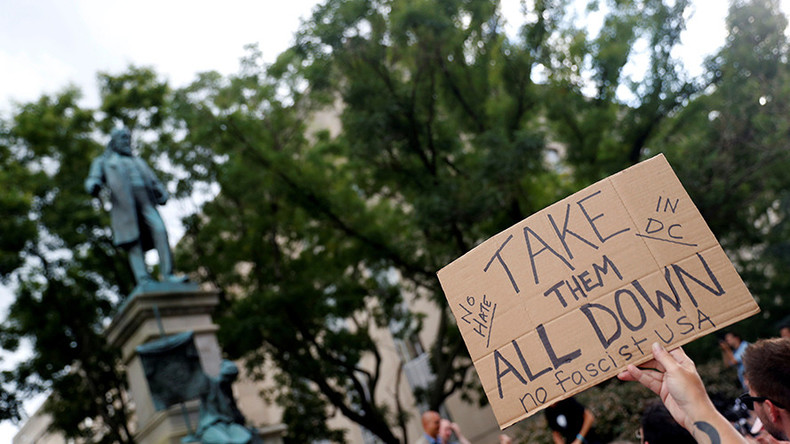The Issue: Should Controversial Statues be removed?
Public pressure to remove statues/monuments of controversial figures in British history.
Opinion has been divided over what are the best measures to take with regards to these monuments and statues.
Contents
- The Bigger Picture
- Why Monuments?
- Does Context Matter?
- What Do We Gain From Taking Down These Monuments?
- What Do We Lose From Taking Down These Monuments?
The Bigger Picture
A huge number of these minorities are descendants of former British colonies. 12.9% of the current inhabitants in Britain are of non-caucasian descent, while close to 3% of the total inhabitants are of an African or Caribbean descent. The issue that these monuments raise, is that it not only reminds these minorities that they are ‘not from here’, but also, that their ancestors were in all likelihood, undermined and misrepresented.

One example of this misrepresentation, as written by Afua Hirsch, is of William Wilberforce, unquestionably a force for good who helped end Britain’s official involvement in the transatlantic slave trade, in 1807. However, he was not alone. The contributions of black people in Britain at the time – especially activists and writers who were slaves themselves – has no equivalent site of glory, in London or anywhere in the country. They have been in many people’s eyes been forgotten or simply ignored.
Monuments are totems and reminders of the power of the British Empire. This relates back to public history as this is an issue is not only present in the British sense but has also impacted the United States as confederate statues have begun to be taken down. On the topic of the United States, an interesting point arises when it comes to how Britain views its own history as compared to the United States.
“The reaction in Britain has been, as in the rest of the world, almost entirely condemnatory of neo-Nazis in the US and of its president for failing to denounce them”, says Hirsch. However, what comes as a surprise is how the British deal with their own issues with regards to their own history. Colonial and pro-slavery titans of British history, such a are still memorialized.
In 2017, minorities living in Britain feel that they still being oppressed. The symbolism of the statues shows a lack of ethics, insensitivity towards minorities and has been widely debated if they are suitable for modern society.
Why Monuments?
The late British social historian, Raphael Samuel noted, “ Unofficial knowledge and popular memory was a starting point for understanding the past that comes not from the classroom but from the ‘civic, ritual, street nomenclature and literary or political statuary’- that is, landscape, monuments and places outside of the books and archives.”
Based off the reasoning of Raphael Samuel, these physical objects have the potential to shape the public’s view of the past, even if what is being memorialized is more or less a popular memory or unofficial knowledge. The fact that a memorial is constructed gives validity to whatever it is meant to represent.

One may ask, why are monuments being called into question and why is this debate such a big deal? In response to that question, it is important to realize that monuments are not always representative of the general public’s views. The certain reason any monument is constructed or who decides to construct it varies from case to case, allowing a public symbol to offer a dialogue that may not be representative of all those that view it. Furthermore, monuments are intended to be symbols that stand the test of time, allowing a certain person, event or idea to be remembered for years to come. This is problematic when general opinions begin to change with time, leaving monuments standing in public spaces that represent ideas far outside of the time that they were acceptable.
As Society progresses forward and ideas change, some believe it makes sense that public representations of the past adapted to fit an inclusive historical narrative. Progression should represent inclusivity, and public history should be inclusive of all groups and narratives, not just those who were able to construct monuments. Within Britain, certain groups feel that various public monuments are outdated and represent ideas that are not consistent with the progression of societal values. Furthermore, as explored in others areas of this website, the British public is beginning to face questions about how it remembers its imperialistic past, and whether or not these representations serve a place in society today.
Does Context Matter?
Many historians in the debate over monuments are arguing over the question of whether “the context of which these monuments were erected, matters?” Historian Richard Aldous states that he believes these monuments should not stand without context. These monuments are a part of the public history of their cities and countries; hence, should not be removed from historical records and be discredited. Instead, they should be studied and understood in the ever-evolving context of history.
“By contextualizing them we understand them, and then as a society, we are able to move forward.” – Richard Aldous
In the case of the monuments analyzed by our research, the majority of them were erected outside of the timeframe from which these persons were alive. In fact, the monument of Edward Colston, in the city of Bristol, was erected over 150 years after his death. In many instances, the monuments were erected by city councils and institutions to commemorate their achievements and contributions to the British Empire. This practice was especially rampant during the height of the British Empire and was used as a tool to express the success of the British Empire around the world. However, it is also important to remember that many of the monuments were heavily contested during their time, even though they were commissioned by governments and influential institutions. This raises the question of whether these public monuments truly represent history correctly. The two generational gap between the death of Colston and the creation of his monument, are an example of the generational shift in feelings towards influential people like Mr. Colston. Therefore, the context of which the monuments are erected is extremely important in understanding the story being told. So that the public does not get a false sense of the past.
JFKLF. “Historian Richard Aldous on the Issue of Removing Controversial Monuments.”- www.youtube.com/watch?v=AdNEYTLIoWM.
What Do We Gain From Taking Down These Monuments?
Those who are for the removal/demolition of these monuments believe that they can feel a sense of vindication in seeing the memory of a controversial figure disappear.

The act of removing the statue is deemed to be more liberating than the actual discussion or debate about the topic. However, this is a slippery slope as it can lead to confusion over where we draw the line when it comes to what and how much we can remove from history.
What Do We Lose From Taking Down These Monuments?
There are a number of things to take into account when it comes to the removal of these monuments. We have to look at the era in which these statues were built, the ideologies behind their creation and what actual purpose would a physical removal of the statue accomplish, are we not allowing people to have a conversation if we simply remove these ‘lightning rods’ of controversy, and most importantly, at what point do we stop? Many are arguing that either none of these monuments are taken down, or all of them are. Classicist Mary Beard has maintained a stand that removals of these monuments are a “dangerous attempt to erase the past.” Professor Beard points out that Rhodes, like Codrington, was racist and their use of slavery plain to see.

However, she argues that a large percentage of the population during 1600’s and 1800’s were racist too. That was the world they lived in, and we should use that as a reminder to ourselves to show how far we have come. “I have admiration for young people challenging the lingering racism of the educational system. My worries are with regards to the narrower historical point: that history cannot be unwritten or hidden away, or simply erased when we change our minds. We need to face the past and our dependence on it and do better than it, that is what the past is for.” Beard is pointing out that history has already been written, and that instead of thinking with emotion and try to remove parts of history we do not agree with, instead use those bits of history to better ourselves in order to not make the same mistake
One Solution to The Monument Controversy: Build New Statues
As the protest of Confederate statues continues across the country, Americans are grappling with how to handle the controversy.
Some have suggested all confederate statues be ripped down and erased from history, others have said local communities should vote on whether to have them moved to a museum and many believe they should stay put as part of history.
Cheryl Chumley has a different idea: Instead of taking the statues down, we should be adding monuments of minorities who have played significant roles in history.
Should Controversial Statues Be Removed? – Video
BBCNewsnight. “Should Controversial Statues Be Removed? – www.youtube.com/watch?v=6AFWEGIKp7Y.
Bibliography
Beard, Mary. “Cecil Rhodes & Oriel College, Oxford.” https://www.thetls.co.uk/. Published. Dec 20, 2015. Oct 20, 2017.
Hirsch, Afua. “Toppling Statues? Here’s Why Nelson’s Column Should Be next | Afua Hirsch.”The Guardian, Guardian News and Media, 22 Aug. 2017, www.theguardian.com/commentisfree/2017/aug/22/toppling-statues-nelsons-column-should-be-next-slavery.
Kean, H. (2013). Introduction . In H. K. Martin, The Public History Reader (pp. xiv-xxxii). New York :Routledge .
Kirsch, Adam, and Francine Prose. “Is Free Speech an Absolute Right, or Does Context Matter?” The New York Times, The New York Times, 24 Aug. 2017, www.nytimes.com/2017/08/24/books/review/free-speech-hate-charlottesville.html?_r=0.
BBCNewsnight. “Should Controversial Statues Be Removed? – BBC Newsnight.” YouTube, YouTube, 21 Aug. 2017, www.youtube.com/watch?v=6AFWEGIKp7Y.
JFKLF. “Historian Richard Aldous on the Issue of Removing Controversial Monuments.”YouTube, YouTube, 30 Oct. 2017, www.youtube.com/watch?v=AdNEYTLIoWM.

